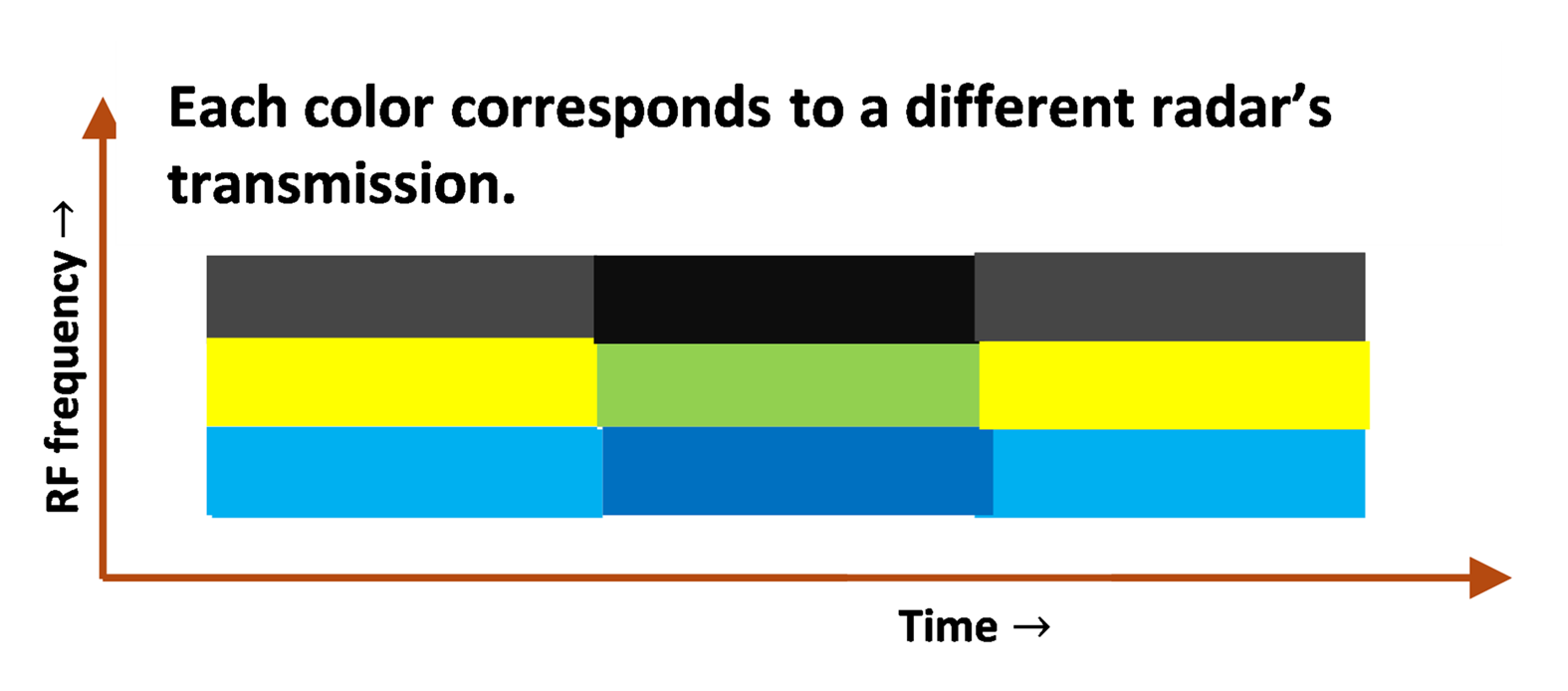SWRA662A January 2020 – September 2022 AWR1243 , AWR1443 , AWR1642 , AWR1843 , AWR1843AOP , AWR2243 , AWR6843 , AWR6843AOP , IWR1443 , IWR1642 , IWR1843 , IWR6443 , IWR6843 , IWR6843AOP
3.1 Standardization: Different Frequency Band and Time Slot for Different Radars
The first method is standardization. Standardization refers to frequency planning and chirp design, as well as time slot management. Frequency planning, based on the resolution requirement, lets different radars coexist in different RF bands. For example, the AWR family of devices has 4 gigahertz of RF bandwidth, which can be divided into 2 gigahertz bands and used simultaneously by two radars.
On the other hand, there is usually silent time between neighboring frames without any active chirping. If the duty cycle for the radar system is 10%, potentially, 10 different radars can separate in time.
Figure 3-1 shows that a radar signal separate in RF frequency and time slot does not experience any interference. The frequency separation is easy to implement. Time slot management must have a common global timing source for all users to synchronize to. In this case, coarse synchronization is sufficient for frames.
 Figure 3-1 Using Different Time Slots and Frequency Slots to Avoid Interference
Figure 3-1 Using Different Time Slots and Frequency Slots to Avoid InterferenceAnother use case can be direction-specific predefined frequency band separation. For example, users can use a separate band for long range radar and short range radar so that they do not interfere with one another. TI also recommends the use of a different band for front-facing radar, and another band for a rear-facing radar.